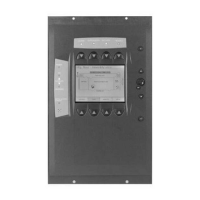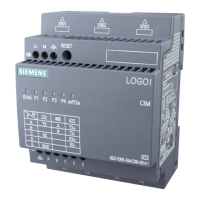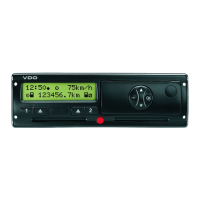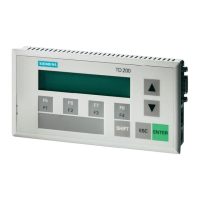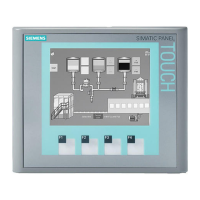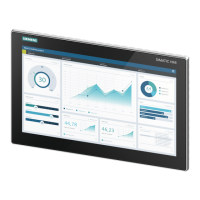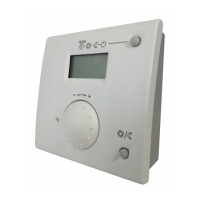
Do you have a question about the Siemens Albatros2 and is the answer not in the manual?
| Model | Albatros 2 |
|---|---|
| Manufacturer | Siemens |
| Sampling Rate | 48kHz |
| Inputs | XLR |
| Outputs | XLR |
Overview of the product range including topology and operation options.
Describes wired and wireless operation configurations for different units.
Specifies conditions for product use, adherence to requirements, and warranty voidance.
General regulations for electrical installation and wiring requirements.
Engineering and mounting method details for the RVS61.843 heat pump controller.
Dimensions, drilling plan, and connection terminals for the AVS75.390 extension module.
Details mounting method, connections, dimensions, and panel cutout for AVS37.294.
Provides connection and dimension details for the AVS37.390 operator unit.
Engineering, mounting, connections, and dimensions for the QAA55 room unit.
Engineering, mounting method, and connections for the QAA75 room unit.
Guidelines for locating wireless components for optimal transmission.
Describes the RF module's function, installation, and connection to the controller.
Engineering and mounting instructions for the QAA78.610 room unit.
Mounting method and connections for the wireless outside sensor.
Mounting method, connections, and radio link setup for the RF repeater.
Checking the LED status for power supply, readiness, and faults.
Operation of room units and operator units, including operating elements.
Explains the meaning of various symbols and segments displayed on the unit.
Details on switching between operating modes like Automatic and Continuous.
Describes how to select and characteristics of the cooling mode.
Explains how to switch DHW heating mode on/off and the DHW push function.
Instructions for adjusting comfort and reduced setpoints using the setting knob.
Function of the occupancy button for saving energy and its activation in automatic mode.
How to display various data, including error and maintenance messages.
How to perform manual defrost or reset functions using the RESET button.
Explains the setting principle and provides an example for setting time of day.
Describes how to access different user levels (Enduser, Commissioning, Heating engineer).
Table summarizing available settings across different operating levels.
Details on setting time programs for heating circuit 3 or heat cost allocators.
Configuration of time programs for DHW heating.
Settings for time program 5.
Setting holiday programs for heating circuits to selectable operating levels.
Details on available functions and settings for heating circuits.
Defines setpoints for heating circuits like Comfort, Reduced, and Frost protection.
Explains how room temperature is affected by different setpoints and operating modes.
Describes heating curve settings for adjusting flow temperature based on weather.
Adjusting the heating curve slope to match heat output to room temperature needs.
Parallel displacement for adjusting flow temperature evenly across temperature ranges.
Automatic adaptation of the heating curve to prevailing weather conditions.
Details on summer/winter heating limits and 24-hour heating limits.
Function to switch heating on/off based on temperature conditions throughout the year.
Defining a temperature range for the flow temperature setpoint required for cooling.
Compensation variants for room temperature sensor to improve control accuracy.
Function to deactivate the cooling circuit pump if room temperature exceeds setpoint.
Used to reach new setpoints faster by shortening heating up times.
Switches heating off for a period, depending on outside temp and building time constant.
Optimizes temperature level changes to reach Comfort setpoint at switching times.
Primarily used in low-capacity heating systems to prevent excessive cooling.
Ensures energy supply to pump heating circuits corresponds to demand.
Controls mixing valve boost, actuator type, switching differential, and running time.
Ensures controlled drying of floors by controlling flow temperature profiles.
Allows excess heat to be drawn off by space heating, triggered by bus or storage tank recooling.
Settings for buffer storage tank and primary controller/system pump interaction.
Details on operating the cooling circuit, including mode selection and setpoints.
Diagram showing energy draw from the same circuit for cooling and heating.
Diagram showing energy draw from separate circuits for cooling and heating.
Selecting operating modes (Off, Automatic) for cooling functions.
Defines the Comfort setpoint for cooling, adjustable via the room unit.
Determines the time program for enabling cooling based on 24h/day or time programs.
Determines required flow temperature for cooling based on two fixed points.
Settings for cooling limit at outside temperature and lock time at end of heating.
Shifts cooling comfort setpoint upwards with increasing outside temperature to save energy.
Defines a low limit for the flow temperature required for cooling.
Compensation variants for room temperature sensor to improve control accuracy.
Function to deactivate cooling circuit pump if room temp falls below preset difference.
Controls mixing valve decrease, actuator type, switching differential, and running time.
Detects condensation formation and controls cooling circuit based on humidity.
Settings for buffer storage tank and primary controller/system pump interaction.
Controls DHW temperature via time program or setpoint, with priority options.
Defines DHW temperature setpoints activated based on selected operating mode.
Determines DHW release based on 24h/day, time programs, or DHW release.
Sets priority for DHW charging over space heating to ensure heat source capacity usage.
Function to combat legionella bacteria, with options for periodic or weekday activation.
Controls circulating pump release, cycling, and setpoint for DHW heating.
Prerequisites and operation of Hx pumps based on heat/refrigeration requests.
Facilitates swimming pool heating using solar energy or heat pump with adjustable setpoints.
Mixes flow and overcomes pressure drop for heating/cooling groups.
Describes function diagrams and components for different heat pump types.
Illustrates components and designations for brine-to-water, water-to-water, and air-to-water heat pumps.
Controls condenser pump operation based on frost protection, temperature requests, and parallel operation.
Functions to prevent operation at low source temperatures and protect source temperature.
Controls compressor based on return temperature and switching differentials.
Controls compressor using buffer/storage tank sensors and return temperature sensor.
Settings for minimum compressor run time, off time, switch-off temperatures, and delay on startup.
Controls electric immersion heater using relay outputs, sensors, and operating modes.
Protects heat pump during DHW charging by managing charging attempts and switch-off.
Parameters for compensating heat deficits and behavior during floor curing function.
Defrosting evaporator using fan or process reversal, with plant diagrams for heating and defrost modes.
Triggers defrost based on temperature difference and controls process reversal.
Details on active and passive cooling modes, including system requirements.
Accomplished by circulating cold water without refrigeration source.
Controls heat sources in a cascade system, managing priority and sequence.
Controls solar charging for swimming pools, DHW, and buffer tanks with priority settings.
Sets priority for charging storage tanks or swimming pool based on heat exchangers.
Activates collector pump for a minimum running time, with activation based on collector sensor.
Activates collector pump to prevent freezing when risk of frost is detected.
Continues storage tank charging to reduce excess heat when overtemperature risk exists.
Integrates buffer storage tank for charging via heat pump, solar, or immersion heater.
Triggers buffer storage tank charging to save electricity or charge before heat pump lockout.
Manages automatic generation locks and temperature differentials for buffer/HC.
Provides hydraulic balancing between consumers and heat source for buffer storage tanks.
Charges buffer storage tank until maximum charging temperature is reached.
Recools buffer storage tank, DHW/HCs, or collector to specific temperatures.
Details on electric immersion heater for buffer storage tank and flow.
Controls DHW temperature via time program or setpoint, with priority options.
Criteria leading to DHW charging abortion by the heat pump.
Manages DHW request to heat source based on setpoint boost and heat transfer.
Sets time limits for DHW charging to prioritize space heating.
Reactivates collector pump until maximum storage tank temperature is reached.
Ensures DHW charging when heat pump is locked or cannot complete process.
Defines whether DHW storage tank receives heat via primary controller or system pump.
Limits charging pump speed to minimum and maximum permissible values.
Supports DHW heating via external heat exchanger using buffer storage tank.
Procedure for selecting and adjusting plant diagrams and parameters.
Preselects plant diagrams by entering a number and connecting sensors.
Manually produces plant diagrams using partial diagrams or adjusts existing ones.
Enables switching heating circuit 1 on/off and deactivates cooling circuit.
Enables switching heating circuit 2 on and off.
Sets DHW control element as none, charging pump, or diverting valve.
Temporarily uses a heat source for DHW charging only, decoupling it from space heating.
Selects heat source type and defines refrigeration generation.
Selects heat source type (Brine, Water, Air, External) and defines sensors.
Defines whether refrigeration is generated and for which system (4-pipe or 2-pipe).
Controls solar controlling element and external solar exchanger for storage tanks.
Defines the function of relay outputs 1 to 6 individually.
Assigns functions to relay outputs, e.g., compressor, pump, or valve control.
Defines the use of BX sensor inputs for various sensors.
Determines function of H1/H3 inputs based on contact closure or analog signal.
Defines the function of Ex inputs (230 V) like electrical utility lock or low tariff.
Defines use of mixing group 1 and its inputs/outputs for logical assignment.
Details functions for extension modules 1 and 2, including inputs and outputs.
Frost protection for heating/cooling circuits on extension module mirrors controller settings.
Defines the use of QX relay outputs on the extension module.
Defines the use of BX sensor inputs on the extension module.
Settings for input H2 on extension module match Hx inputs on basic unit.
Voltage-modulated output for speed-controlled pumps or temperature requests.
Selection and readjustment of sensor types like collector, and outside sensors.
Adjusts the response rate of flow temperature setpoint to varying outside temperatures.
Activates heating circuit and condenser pumps based on outside temperature.
Activates and deactivates air dehumidification based on humidity levels.
Saving and resetting sensor states for proper controller operation.
Saving and resetting parameters to default values.
Checks the correct plant diagram by comparing check numbers.
Generates a check number to identify the current plant diagram.
Configuration of device address, segment address, and bus power supply.
Sets device and segment addresses and manages bus power supply.
Defines ranges of action for central changeover, summer changeover, and operating mode.
Defines the range of action for central changeover of operating mode.
Defines the range of action for summer changeover (local or central).
Defines the range of action for operating mode changeover via input H.
Sets clock mode (Autonomous, Slave, Master) and outside temp source.
Displays and manages error messages, including reset and history.
Resets alarm relays and heat pump errors.
Monitors setpoint and current temperature differences to trigger error messages.
Saves and displays the last 10 errors with associated state codes.
Provides error texts, location, reset methods, HP operation status, and priority.
Indicates whether the heat pump can continue operation during a fault.
Delivers alarm messages for remote monitoring and sets alarm relay.
Functions for periodic plant monitoring and maintenance messages.
Sets interval for heat pump service and displays elapsed time since last visit.
Sets maximum permissible compressor starts per hour and displays average starts.
Sets maximum permissible compressor starts per hour and displays average starts.
Indicates how many times the max temperature differential across condenser may be exceeded weekly.
Indicates how many times the min temperature differential across condenser may drop weekly.
Indicates how many times the max temperature differential across evaporator may be exceeded weekly.
Indicates how many times the min temperature differential across evaporator may drop weekly.
Sets interval for DHW storage tank servicing and displays elapsed time since last visit.
Minimum temperature for DHW charging by heat pump without abortion.
Lists other maintenance messages with associated priorities.
Activates or deactivates economy mode.
Starts emergency operation using electric immersion heaters when heat pump is faulty.
Simulates outside temperatures for commissioning and fault tracing.
Manually triggers the heat pump's defrost function.
Resets limitations to allow heat pump operation after shutdown.
Sets phone numbers for error and maintenance messages.
Checks correct functioning of connected components via input/output tests.
Tests relay outputs by energizing them and checking wiring.
Delivers appropriate signals for UX/P1 outputs for checking.
Displays relevant input for checking when selecting settings from input test sensors.
Shows voltage signals and contact states for inputs H1, H2, H3.
Visualizes the current operating state of the plant using status displays.
Displays various status messages for heating circuits, DHW, cooling, and heat pump.
Shows states like manual control, frost protection, and summer operation.
Displays states related to DHW charging, recooling, and heating modes.
Shows states for cooling mode, frost protection, and temperature limitations.
Displays states for emergency operation, faults, and cooling modes.
Shows states for manual control, fault, frost protection, and recooling.
Displays the last 10 status messages with associated state codes.
Displays priority, state, temperatures, and sequence of sources/stages in a cascade.
Shows priority and state information for sources 1 through 16.
Displays setpoints, actual values, relay states, and meter readings for heat sources.
Queries setpoints and actual values for heat pump components like temperature and modulation.
Shows remaining off/on times for compressor stages.
Displays compressor sequence and related time settings.
Shows operating hours and start counts for compressors and electric immersion heater.
Displays operating states of fan, process reversing valve, evaporator temperature, and defrost settings.
Displays operational data for solar pumps, collector temperatures, and energy yields.
Displays setpoints, actual values, and states for consumers like outside temp and room temp.
Displays current, min, max, attenuated, and composite outside temperatures.
Displays relative room humidity, room temperature, and dewpoint temperature.
Shows operating states of heating circuit pumps, mixing valves, and speeds.
Displays states of cooling circuit pump, mixing valve, and flow temperature.
Shows DHW pump status, heater status, speeds, temperatures, and controller values.
Displays current swimming pool temperature and setpoint.
Displays current primary controller temperature and setpoint.
Displays common flow temperature, setpoint, and refrigeration setpoint.
Displays setpoints, actual values, and operating hours for buffer storage tank.
Displays temperature setpoints for inputs H1, H2, H3 when activated.
Displays water pressure for inputs H1, H2, H3 when activated.
Preselectable plant diagrams based on numbers, including sensors and optional components.
Brine-to-water heat pump with pump heating circuit.
Brine-to-water heat pump with pump heating circuit and DHW storage tank.
Brine-to-water heat pump with pump heating circuit and DHW diverting valve.
Brine-to-water heat pump with buffer storage tank and mixing/pump heating circuit.
Brine-to-water heat pump with buffer, DHW tank, charging pump, and mixing/pump circuit.
Brine-to-water heat pump with buffer, DHW tank, diverting valve, and mixing/pump circuit.
Brine-to-water heat pump with combi storage tank, DHW charging pump, and mixing/pump circuit.
Brine-to-water heat pump with combi storage tank, DHW diverting valve, and mixing/pump circuit.
Air-to-water heat pump with pump heating circuit.
Air-to-water heat pump with pump heating circuit and DHW storage tank.
Air-to-water heat pump with pump heating circuit and DHW diverting valve.
Air-to-water heat pump with buffer storage tank and mixing/pump heating circuit.
Air-to-water heat pump with buffer storage tank, DHW tank, charging pump, and mixing/pump circuit.
Air-to-water heat pump with buffer storage tank, DHW diverting valve, and mixing/pump circuit.
Air-to-water heat pump with combi storage tank, DHW charging pump, and mixing/pump circuit.
Air-to-water heat pump with combi storage tank, DHW diverting valve, and mixing/pump circuit.
Brine-to-water heat pump, DHW storage tank with diverting valve, solar collector, and pump heating circuit.
Brine-to-water heat pump, combi storage tank, DHW diverting valve, solar collector, and mixing/pump circuit.
Air-to-water heat pump, DHW storage tank with diverting valve, solar collector, and pump heating circuit.
Air-to-water heat pump, combi storage tank, DHW diverting valve, solar collector, and mixing/pump circuit.
Brine-to-water heat pump, DHW storage tank, charging pump, pump heating, and mixing cooling circuit.
Brine-to-water heat pump, DHW tank, charging pump, buffer tank, mixing/pump circuit, cooling circuit.
Brine-to-water heat pump, combi storage tank, DHW diverting valve, and mixing/pump circuit.
Air-to-water heat pump, DHW diverting valve, mixing/pump circuit, and cooling circuit.
Refer to Partial Plant Diagram Catalog for source variants and extra functions.
Technical specifications for the basic unit RVS61.843.
Technical specifications for the AVS75.390 extension module.
Technical specifications for operator and room units.
Technical specifications for the AVS71.390 RF module.
Technical specifications for the wireless outside sensor AVS13.399.
Technical specifications for the RF repeater AVS14.390.
Temperature and resistance characteristics for NTC and Pt1000 sensors.
Temperature vs. resistance data for NTC 1k sensor.
Temperature vs. resistance data for NTC 10k sensor.
Temperature vs. resistance data for Pt1000 sensor.


